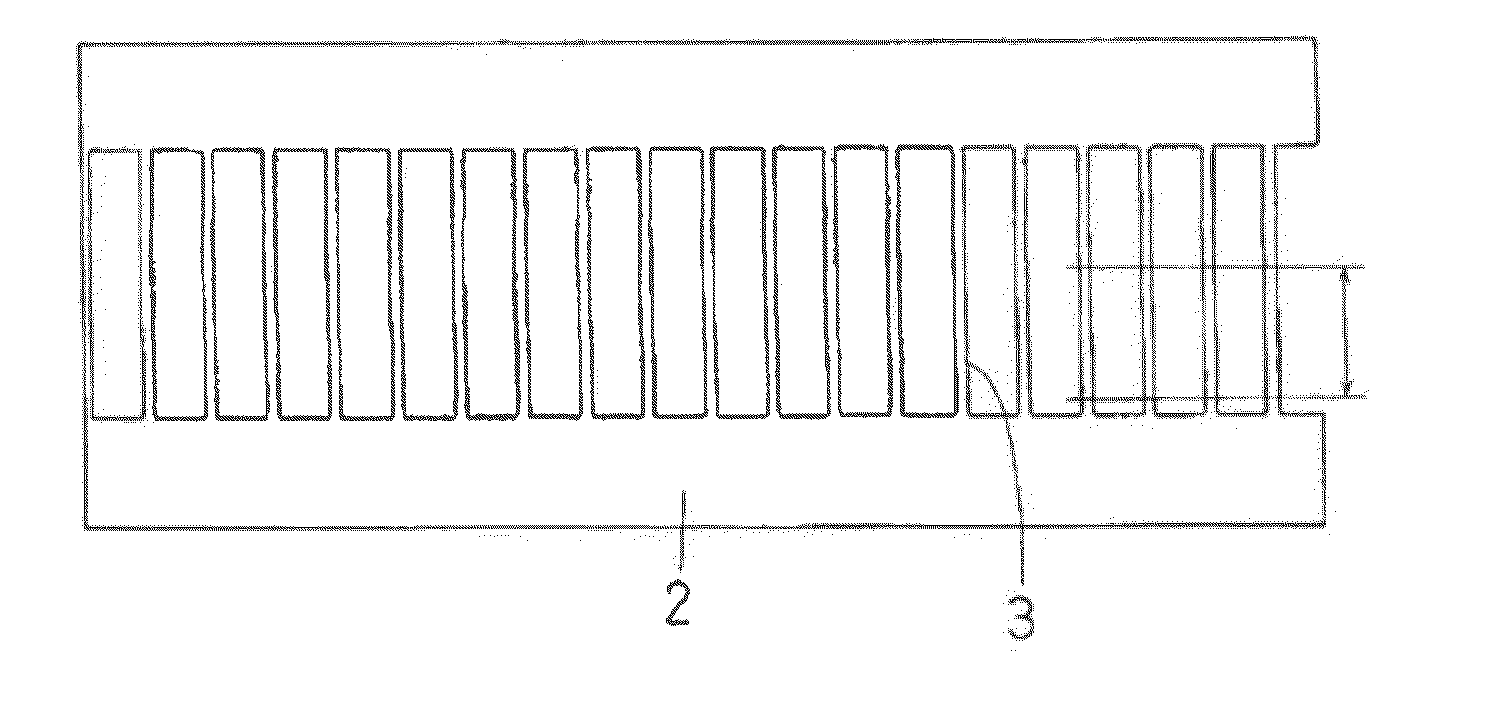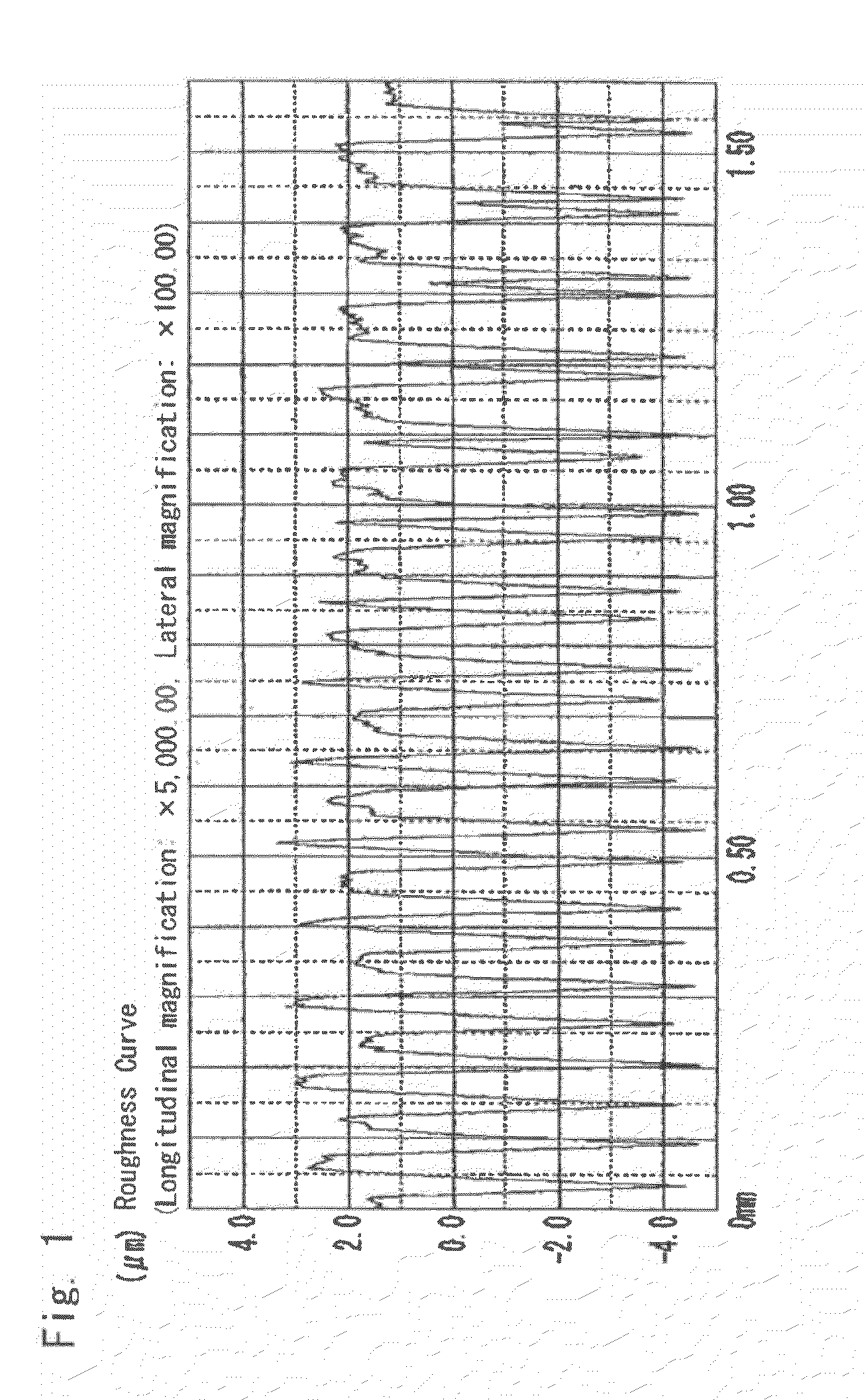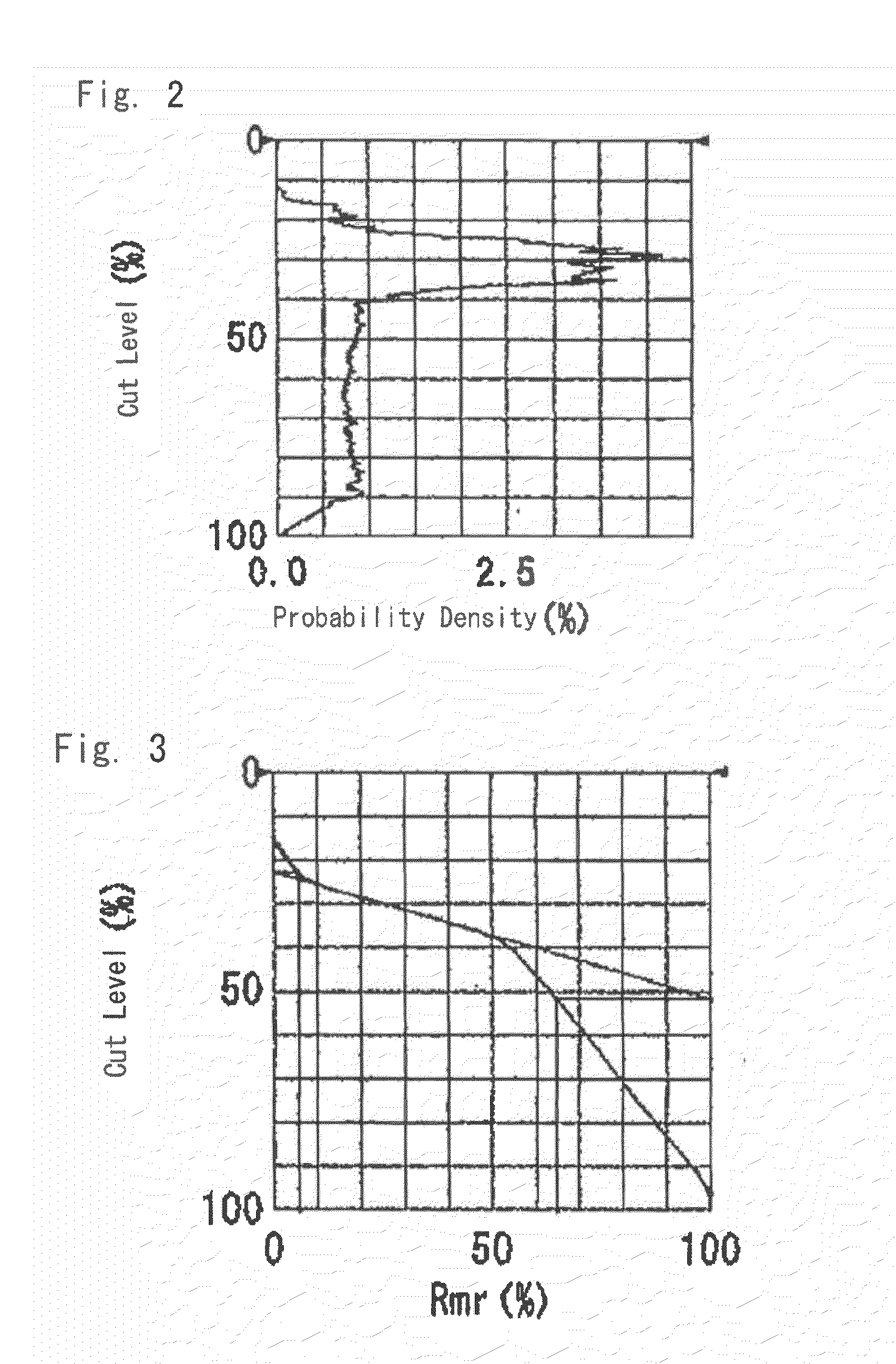Copper alloy and electrically conductive material for connecting parts, and mating-type connecting part and method for producing the same
a technology of copper alloy and electrically conductive material, which is applied in the manufacture of contact parts, superimposed coating processes, transportation and packaging, etc., can solve problems such as solder wettability problems, and achieve the effects of low insertion force, excellent electrical reliability, and low insertion for
- Summary
- Abstract
- Description
- Claims
- Application Information
AI Technical Summary
Benefits of technology
Problems solved by technology
Method used
Image
Examples
example 1
Production of Cu Alloy Base Material
[0116]In this example, a copper alloy strip containing Ni, Si, Zn, and Sn in amounts of 1.8 mass %, 0.40 mass %, 1.1 mass %, and 0.10 mass % based on Cu, respectively, and having a Vickers hardness of 180 and a thickness of 0.25 mmt was produced.
[0117]A specimen with a size of 100 mm×40 mm (rolling / longitudinal direction x perpendicular direction) was cut from the copper alloy strip. A part provided with predetermined depressions and projections on the pressing surface thereof was mounted at a predetermined position in a progressive die for forming pin terminals (position after the formation of the pin terminals), and pin terminal shapes with a size of 1 mm w×22 mm L were formed with a pitch of 5 mm. At the same time, a 1 mm w×10 mm L area of the surface of each pin terminal was surface-roughened. FIG. 5 shows a schematic diagram of the copper sheet after the formation and the surface roughening. In FIG. 5, 2 is the copper sheet, 3 is the pin term...
example 2
[0132]In addition to Nos. 4, 5, 7, 13, and 14 used in Example 1, No. 17 was newly formed, surface-roughened, plated, and reflowed in the same manner as in Example 1 to prepare specimens. Subsequently, the surface roughness (including protrusion valley portion depth Rvk), the thickness of the Sn coating layer, and the friction coefficient were measured in the same manner. Nos. 4 and 17, as well as Nos. 5 and 14, are similar to each other in terms of arithmetic mean roughness Ra, mean projection-depression interval RSm, skewness Rsk, and protrusion peak portion height Rpk, and are different from each other in terms of protrusion valley portion depth Rvk. Further, Nos. 4, 5, 7, 13, 14, and 17 were measured for contact resistance after high-temperature storage as follows. The results are shown in Table 2.
Contact Resistance Evaluation Test after High-Temperature Storage
[0133]Each test material was heat-treated in air at 160° C. for 120 hours and 500 hours, and then measured for contact r...
example 3
Production of Copper Plate Material (Plated Base Material)
[0136]In this example, as in the paragraph [0060], a copper alloy strip containing Ni, Si, Zn, and Sn in amounts of 1.8 mass %, 0.40 mass %, 1.1 mass %, and 0.10 mass % based on Cu, respectively, and having a Vickers hardness of 180 and a thickness of 0.25 mmt was produced.
[0137]A specimen with a size of 100 mm×40 mm (rolling / longitudinal direction×perpendicular direction) was cut from the copper alloy strip. A part provided with predetermined depressions and projections on the pressing surface thereof was mounted at a predetermined position in a progressive die for forming pin terminals (position after the formation of the pin terminals), and pin terminal shapes with a size of 1 mm w×22 mm L were formed with a pitch of 5 mm. At the same time, a 1 mm w×10 mm L area of the surface of each pin terminal was surface-roughened. FIG. 12 shows a schematic diagram of the copper sheet after the terminal formation and the surface rough...
PUM
| Property | Measurement | Unit |
|---|---|---|
| Length | aaaaa | aaaaa |
| Length | aaaaa | aaaaa |
| Length | aaaaa | aaaaa |
Abstract
Description
Claims
Application Information
 Login to View More
Login to View More - R&D
- Intellectual Property
- Life Sciences
- Materials
- Tech Scout
- Unparalleled Data Quality
- Higher Quality Content
- 60% Fewer Hallucinations
Browse by: Latest US Patents, China's latest patents, Technical Efficacy Thesaurus, Application Domain, Technology Topic, Popular Technical Reports.
© 2025 PatSnap. All rights reserved.Legal|Privacy policy|Modern Slavery Act Transparency Statement|Sitemap|About US| Contact US: help@patsnap.com



